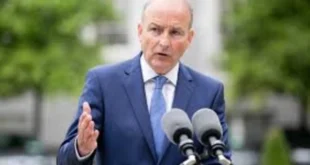The Chief Executive of the Health Service Executive (HSE) has expressed disappointment over the upcoming industrial action by healthcare workers, calling it regrettable given the increased funding and growing workforce within the health service.
Healthcare unions, including Fórsa and the Irish Nurses and Midwives Organisation (INMO), have served notice to the HSE regarding planned action in response to ongoing staffing shortages. The unions argue that the HSE’s Pay and Numbers Strategy has imposed a fixed employment ceiling, restricting the hiring of essential healthcare professionals and suppressing much-needed posts.
The industrial action is set to begin on March 31 after a three-week notice period. Initially, it will take the form of a work-to-rule, meaning staff will follow only their contractually required duties, along with other forms of non-cooperation. The unions have warned that if the dispute escalates, phased work stoppages could follow.
Unions Demand End to Recruitment Embargo
INMO General Secretary Phil Ní Sheaghdha emphasized that frontline healthcare workers are under severe pressure due to understaffing, with recruitment restrictions exacerbating the crisis. She pointed out that limiting the hiring of patient-facing roles violates existing safe staffing agreements between the unions and the HSE.
“Nurses and midwives are desperate for support, yet they are met with hiring restrictions and administrative hurdles instead of additional staff,” she stated.
Fórsa’s Head of Health & Welfare, Ashley Connolly, added that Ireland’s growing and ageing population requires a stronger approach to workforce planning. She criticized the loss of thousands of sanctioned posts due to HSE policies, arguing that staff shortages are jeopardizing patient safety.
Several other unions, including Connect, Unite, and the Medical Laboratory Scientists Association, have also voiced their opposition to the HSE’s Pay and Numbers Strategy, stating that the approach is putting immense strain on healthcare services.
HSE Defends Recruitment Strategy
Speaking on RTÉ’s Today with Claire Byrne, HSE Chief Executive Bernard Gloster argued that the planned action falls outside the Public Service Agreement, which is meant to provide stability.
He acknowledged concerns but pointed out that staffing levels have continued to increase, with plans to recruit 6,800 more employees before the year’s end.
Gloster explained that the cut-off date for workforce planning was December 31, 2023, meaning that while some posts remained vacant, the government had also funded an additional 4,000 previously unfunded positions. He argued that as staff turnover occurs, there is flexibility to address imbalances and redistribute resources to where they are most needed.
The HSE has communicated this position to the unions and hopes for further discussions in the coming weeks to find a resolution. However, a spokesperson warned that any industrial action would severely disrupt services, leading to longer waiting lists and increased delays for patients.
While efforts to avoid the strike continue, the looming industrial action signals a deepening rift between healthcare unions and the HSE over staffing policies and recruitment limitations.
 The Daily Star Ireland
The Daily Star Ireland

